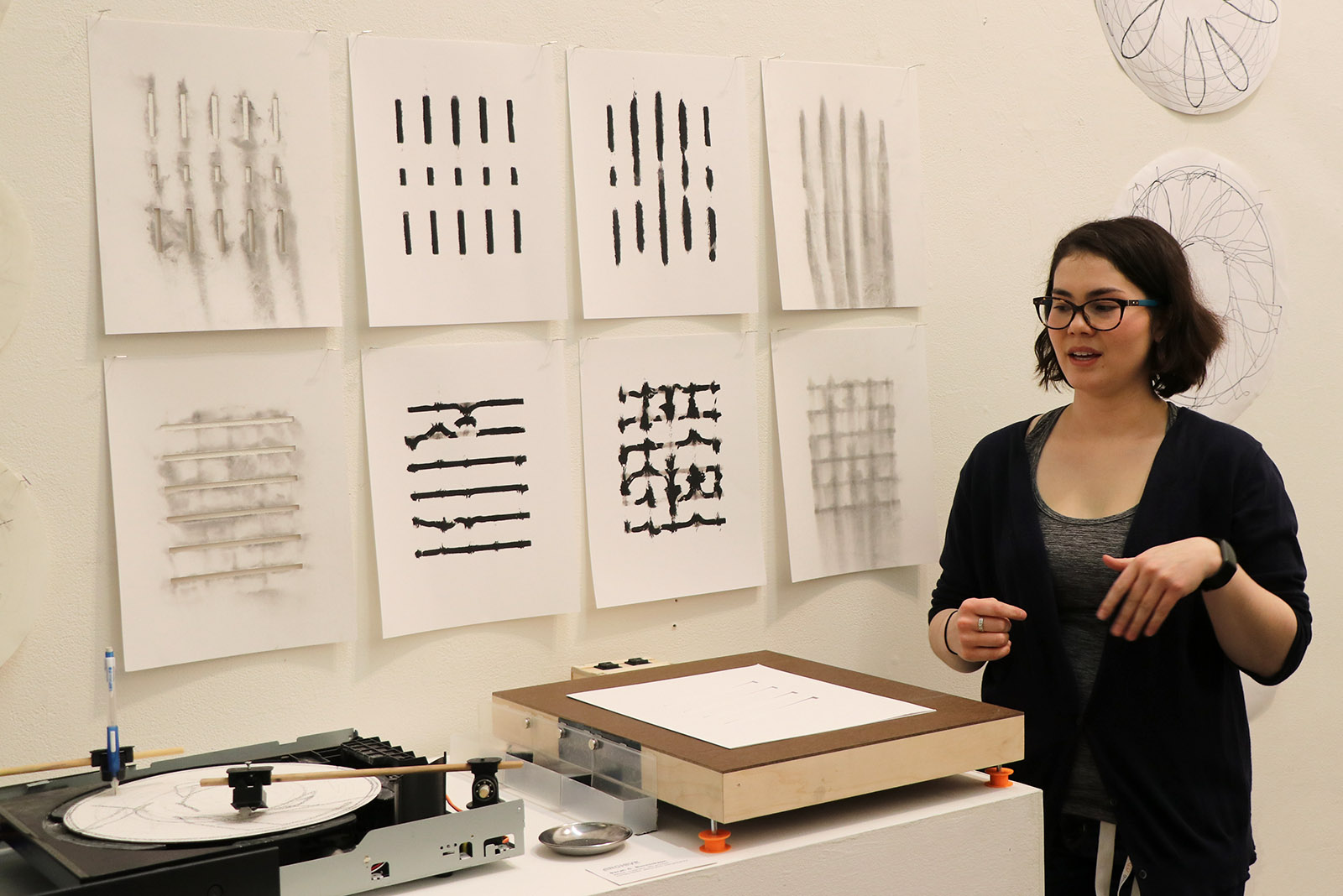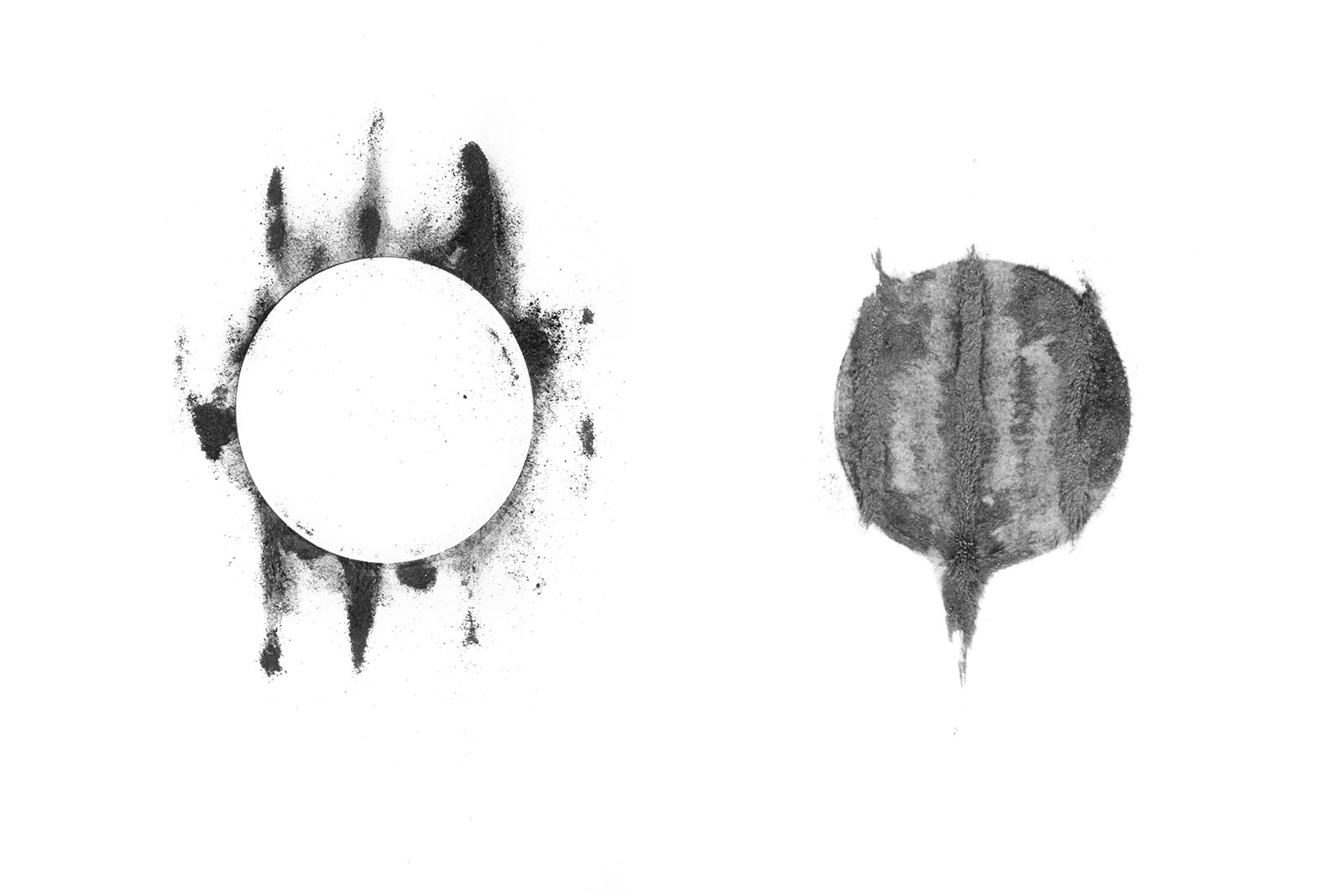




︎ ART | MACHINE
Drawing Machine: Archive
This project was an expression of the passage of time, our relationship to it, and our attempts to grasp that which is ungraspable. The machine itself is a nondescript wooden box, about the dimensions of a modest blank canvas. When it turns on, an evocative ticking sound emanates from below, counting irregular seconds like a broken clock——yet the flat surface of the top of the box remains unmoved. It is mysterious, revealing nothing at first glance, concealing an inner system of moving belts and whirring motors. The motion of the hidden mechanisms guides a series of magnets across the underside of the box, creating a moving network of magnetic forces invisible to the eye but revealed through interaction.
Using the box to create images is as performative as it is procedural. I would place a blank piece of paper on the flat surface of the box with a cut-paper mask over it. This would be followed by a mixture of graphite powder and metal filings poured over the mask to create a set shape or pattern. The machine would then be turned on, and the magnets moving beneath the surface would cause the initial shapes of magnetized graphite to shift and evolve: creating fleeting sculptural forms and leaving behind whispers of graphite shadows.
This evolution would be captured with photographs: starting with the masked shapes, moving through photographs of the graphite in motion, and ending with the final image created on the paper that the graphite moved across. The captured documentary sequence is a stand-in for witnessing the performative process firsthand, but it is incapable of replicating the shifting surface of the drawing in motion. The poignance of the traces left behind and the suggestion of movement in its absence are reminders that the capture is not a replication of what was, but rather something else entirely: an inscription of loss.